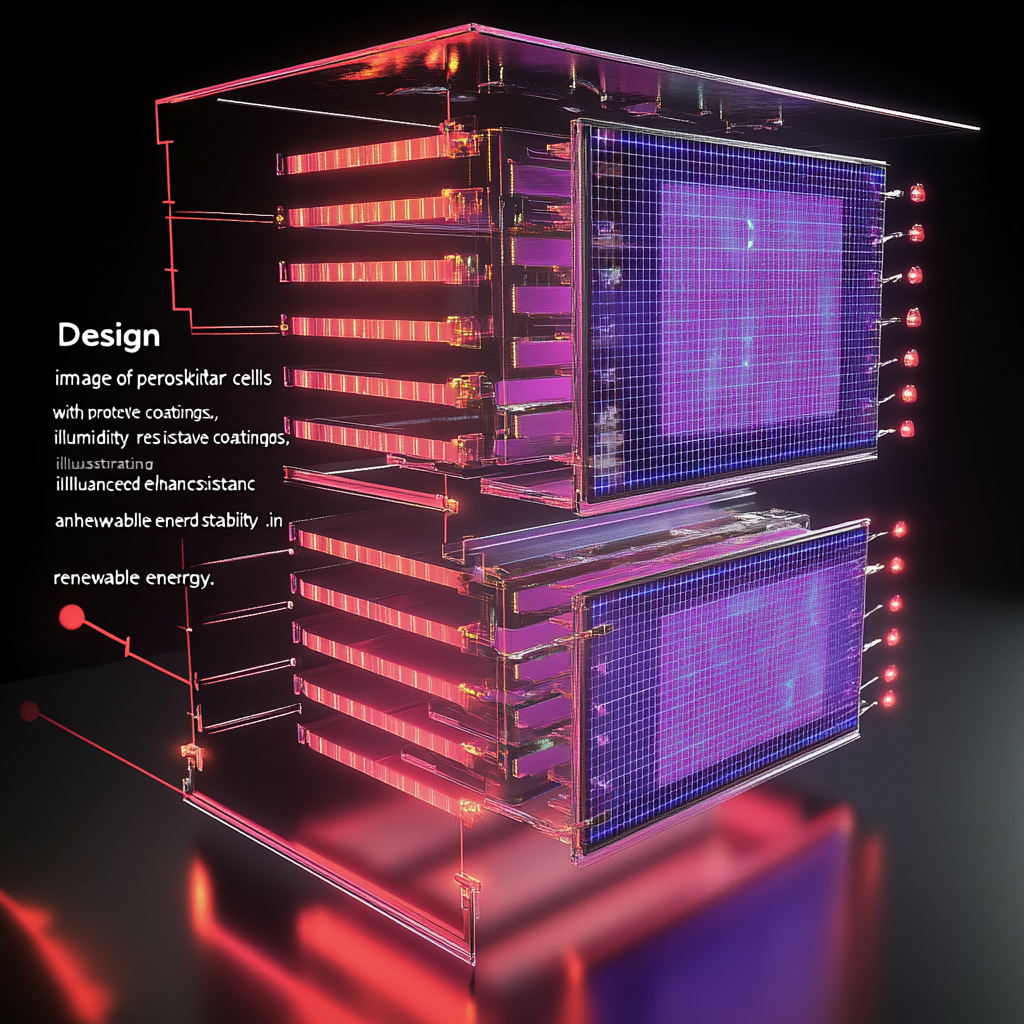
Humidity and Perovskite: Unveiling the Weakness in Solar Cells
Conquering the Humidity Beast: Making Solar Cells Battle-Ready
Solar energy stands as a shining beacon in the renewable energy revolution, like that superhero we always needed but never knew existed. Yet lurking in the shadows, ready to sabotage our efforts, is the notorious villain — humidity, particularly when it comes to perovskite solar cells. Imagine these cells as trendy startups that have a lot of potential but are stuck in an endless cycle of issues, with moisture being their primary nemesis. So, let’s dive into the saga of how humidity wreaks havoc on these promising powerhouses and the ingenious strategies researchers are deploying to fortify them against the climatic conditions.
Why Perovskite Solar Cells Are the Talk of the Town
There’s a good reason why perovskite solar cells (PSCs) have everybody buzzing — they boast mind-boggling power conversion efficiencies (PCE) and are cheap to manufacture. However, their success story is marred by a critical hiccup: they aren’t exactly weatherproof. These cells are made from an ionic crystal structure, which sounds fancy and all, but here’s the kicker: it also means they’re like kid gloves in a mud fight when it comes to moisture.
What happens when humidity steps in? Picture water molecules infiltrating the perovskite film, turning their elegant 3D crystal network into a deformed, sad little structure that would make even the most resilient architect sob. This structural assault doesn’t just ruin the aesthetic; it dramatically reduces the cell’s efficiency. The moist atmosphere doesn’t come alone — it brings along its buddies, UV light and oxygen, transforming the whole scene into a chaotic degradation festival.
The Humidity Dilemma: Unveiling the Enemy’s Tactics
Humidity is the reigning champ when it comes to destabilizing solar cells. Here’s how it plays its hand:
-
Moisture-Induced Mayhem: When perovskites meet moisture, the reaction resembles a bad breakup — pure chaos ensues. Water molecules seep in, wreaking havoc on the crystal structure and creating quirky hydrated phases that further compromise performance. It’s like watching your best friend’s carefully organized life descend into total disarray, all at the hands of a microwave dinner gone wrong.
-
Speeding Up the Downfall: The villainous duo of UV light and oxygen speed things along, accelerating the disintegration of these delicate materials. Just when you think things can’t get worse, they create a plethora of by-products that are like unwanted guests at a party, draining the atmosphere (and efficiency) right out of the room.
-
Fabrication Fiascos: Even when researchers try to whip up these perovskite marvels in their labs, high humidity can derail their efforts. Moisture messes with the film growth, resulting in imperfect morphology and undercooked solar cell performance. This is why lab conditions must mimic a perfect weather day, driving up costs and making researchers feel like they’re trying to bake a soufflé in a hurricane.
Battle Strategies: Fortifying the Cells Against Humidity’s Fury
But don’t worry! Researchers aren’t simply throwing their hands in the air — they’ve got some clever maneuvers up their sleeves to boost the resilience of PSCs against humidity’s relentless onslaught:
-
Alloying for Resilience: Think of alloying like putting on armor. By adding cesium (Cs) to the mix, scientists are finding that these enriched perovskite materials, like FA₀.₈₅Cs₀.₁₅PbI₃, shine brighter and last longer. It’s like supercharging the cells with a little something extra to fend off humidity’s grip.
-
The Seed Solution Savvy: There’s a sneaky technique in play here called the seed solution method. By using a seed solution, researchers can grow perovskite films that laugh in the face of high humidity. They produce power conversion efficiencies that remain steady even when the humidity levels are trying to party-crash their perfect performance.
-
Changing Up the Recipe: Researchers are rolling up their sleeves and adapting fabrication methods for high-humidity environments. Scalable processing tools like blade coating and spray coating are like having a Swiss Army knife for production — keeping efficiency intact while increasing the resilience of PSCs.
Beyond the Perovskite Zone: The Humidity Dilemma for Traditional Panels
But guess what? It’s not just perovskite cells that face humidity challenges. Traditional solar panels also have their share of woes:
-
Moisture Buildup: Just like mold on your forgotten leftovers, humidity can accumulate on solar panel surfaces, blocking sunlight and reducing power output. Over time, this dampness leads to a slow but sure decline in the energy generation game.
-
Corrosion Catastrophes: If humidity can mess up new-age solar cells, it can certainly wreak havoc on traditional panels, corroding metal components and slipping in through the cracks. The result? A shortened lifespan and a level of unreliability that would make even Alice in Wonderland double take.
Wrapping Up This Humid Hurdle
It’s abundantly clear that the battle against humidity is pivotal for the solar energy revolution, particularly for perovskite solar cells. By grasping the mechanics of moisture-induced degradation and rallying innovative strategies, researchers are laying the groundwork for solar cells that don’t just survive but thrive in the face of humidity.
And here’s where you come in. To stay in the know about the latest breakthroughs in solar technology and the ongoing fight against humid foes, join our vibrant community over on Telegram. Want to stay up to date with the latest news on neural networks and automation? Subscribe to our Telegram channel: @channel_neirotoken
Remember, the future of renewable energy hinges on our ability to tackle environmental challenges like humidity. Equip yourself with knowledge, stay informed, and be part of the solar energy revolution!

